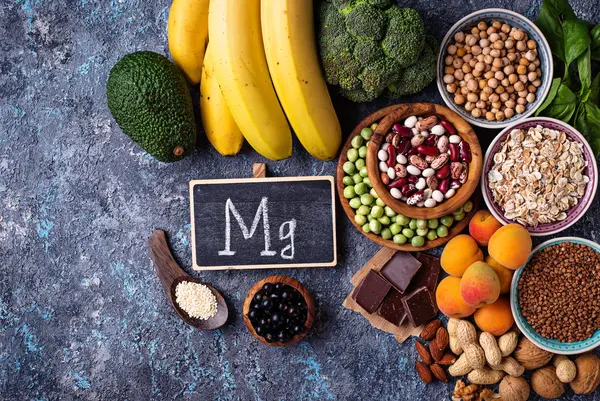Food & Nutrition
The Importance of Magnesium in Your Child’s Diet

Magnesium plays a critical role in supporting your child’s health and development. As one of the essential minerals in their diet, it helps keep bones strong, maintains a steady heart rhythm, supports immune function, and ensures proper muscle and nerve function. Understanding how much magnesium your child needs and where to find the best sources can help you keep their diet balanced and healthy.
Why Magnesium is Important for Your Child
Magnesium is an essential mineral that your child’s body uses to maintain several important functions. Not only does it help strengthen bones, but it also plays a vital role in stabilizing the heart’s rhythm, supporting the immune system, and maintaining muscle and nerve function. Ensuring your child gets enough magnesium is key to their overall health and well-being.
How Much Magnesium Does Your Child Need?
The amount of magnesium your child needs varies depending on their age. The recommended daily intake is as follows:
- Ages 1 to 3 years: 80 milligrams (mg) daily
- Ages 4 to 8 years: 130 mg daily
It’s important to note that your child doesn’t need to consume the full recommended amount every single day. Instead, aim to get the appropriate amount over a period of several days or a week. This will help ensure they receive enough magnesium without stressing over daily intake.
The Best Sources of Magnesium for Kids
Nuts, legumes, and leafy green vegetables are among the top sources of magnesium. These foods provide not only the mineral but also other essential nutrients for your child’s growth. Whole grain bread is another excellent source, as it retains the magnesium content of the grain. Here are some magnesium-rich foods to consider adding to your child’s diet:
- 1/2 cup all-bran cereal: 93 mg
- 1 ounce dry roasted cashews: 74 mg
- 1/4 cup oil roasted peanuts: 63 mg
- 1 cup plain soymilk: 61 mg
- 1/2 cup cooked edamame: 50 mg
- 1 tablespoon almond butter: 45 mg
- 1/4 cup cooked spinach: 39 mg
Other options include whole wheat bread, black beans, yogurt, and milk. However, be cautious with nuts and seeds for very young children, as they pose choking hazards. It’s recommended to mash or thinly spread nut butters to reduce the risk.
Can My Child Get Too Much Magnesium?
While it’s unlikely for children to consume too much magnesium from food alone, taking excessive amounts through supplements can be harmful. Too much magnesium can cause digestive issues such as diarrhea and stomach cramps. In extreme cases, it may lead to toxicity.
For children ages 1 to 3, the tolerable upper intake level of magnesium from supplements is 65 mg per day, and for children ages 4 to 8, it’s 110 mg per day. The Food and Nutrition Board of the Institute of Medicine advises that these limits are the maximum safe levels from supplements. There’s no upper intake limit for magnesium from food sources, making it a safer option for fulfilling their magnesium needs.
By including magnesium-rich foods in your child’s diet and being mindful of supplement usage, you can help ensure they receive the proper nutrients for healthy growth and development.












